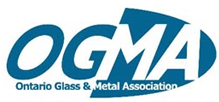Are You Ready for AODA?
by Frank Fulton
Originally published in Glass Canada Magazine, June 2016 Issue
Accommodating Disability
Not long ago I attended the Top Glass Conference and Exhibits show in Mississauga, Ont., put on by Glass Canada and spent the day between manning the OGMA booth and schmoozing with visitors, exhibitors, old and new customers and former employees. This year’s event was particularly busy with a big showing of architects who came to get Ontario Association of Architects learning credits for attending some of the seminars put on. It seems that’s what it takes to get architects to attend glass-industry related conferences. At any rate, the organizers and exhibitors were thrilled with the turnout and I would strongly recommend manufacturers and suppliers to the commercial glass trade to sign on for the next Top Glass event.
I love events like this: one day only with quick to put-up and take-down displays. They’re a great opportunity to catch up with people you haven’t seen in a while, do what you can to avoid the ones you don’t want to catch up with, and to get up to speed on everything that matters with the who’s who in the business. A lot of visitors to the OGMA booth showed considerable interest in our OGMA/WSPS Health and Safety Policy Manual. A common concern voiced by many was that they never hear anything about the myriad of changes and updates to the government regulations they’re supposed to be in compliance with. Quite frankly, there’s no way anybody can be up to speed on this stuff, let alone deal with it all, and still find time to manage their business.
Take the Accessibility for Ontarians with Disabilities Act (AODA) legislation for example. Every person who is found guilty of an offence under this Act is liable to conviction and a fine of up to $50,000 for each day or part of a day on which the offence occurs or continues to occur. If a corporation is found guilty, the fine can be up to $100,000 per day and every director or officer who is found guilty of not carrying out their duties pertaining to the Act are subject to fines of up to $50,000 per day. Claiming ignorance of the law won’t get you off the hook when you’re caught not complying.
As of today, Ontario companies with less than 20 employees are already legally required to be able to provide accessible customer service, have documented employee training in serving customers of all abilities, have a written accessibility policy in place available to all employees and customers, be able to provide publicly available emergency information and receive feedback from people with disabilities.
By the end of 2016, a small business is required to make their public information accessible when asked in a timely manner. This applies to both written and other forms of communication pertaining to emergency and public safety information, feedback processes for employees and the public, employee information and other public information such as price lists and product and project specifications. There are a number of formats that can be used to comply to depending on the specific disability being addressed and they don’t necessarily have to be expensive, but they do have to be in place.
Also, by the end of this year, all companies must make their employment practices accessible to meet the needs of employees and job applicants with disabilities. What this entails is notifying your employees and the public that you will accommodate the needs of people with disabilities in your hiring process and will make adjustments to support them. You are required to provide workplace information that is in an accessible format if an employee asks for it such as job descriptions, manuals, forms, policies, and health and safety information. All non-disabled employees must be trained in how to assist any disabled co-workers, customers, or visitors in the event of an emergency and be provided with documented information about your companies policies to support people with disabilities.
The requirement for companies with 20 or more employees becomes more onerous and even more so for companies with numbers greater than 50. So do yourself a favour and get the WSPS people on board to help you put what you need in place to avoid the fallout and expense of non-compliance.
Frank Fulton is president of Fultech Fenestration Consulting. He has been in the industry for 30 years and can be reached via email at fultech.fc@gmail.com

